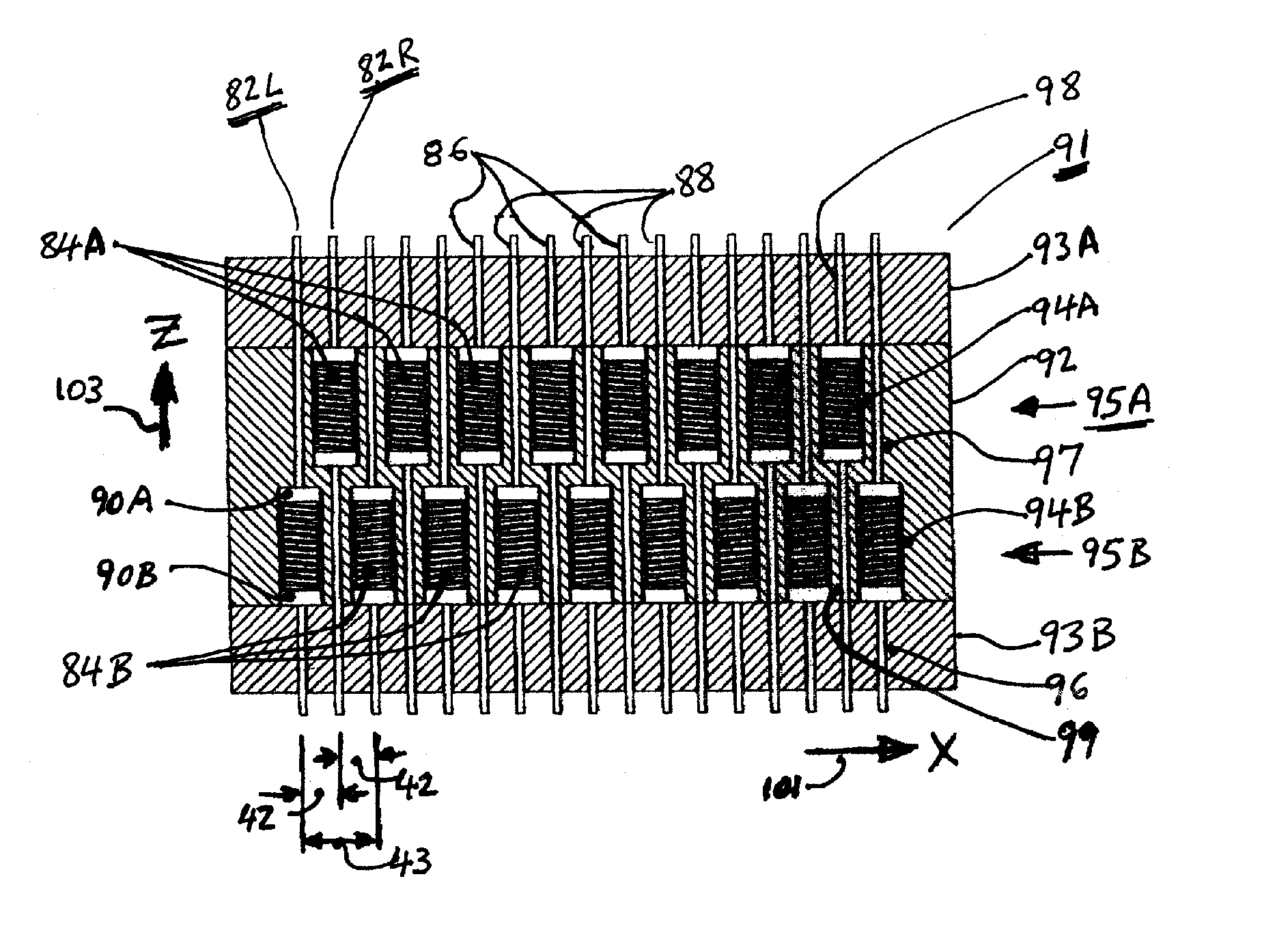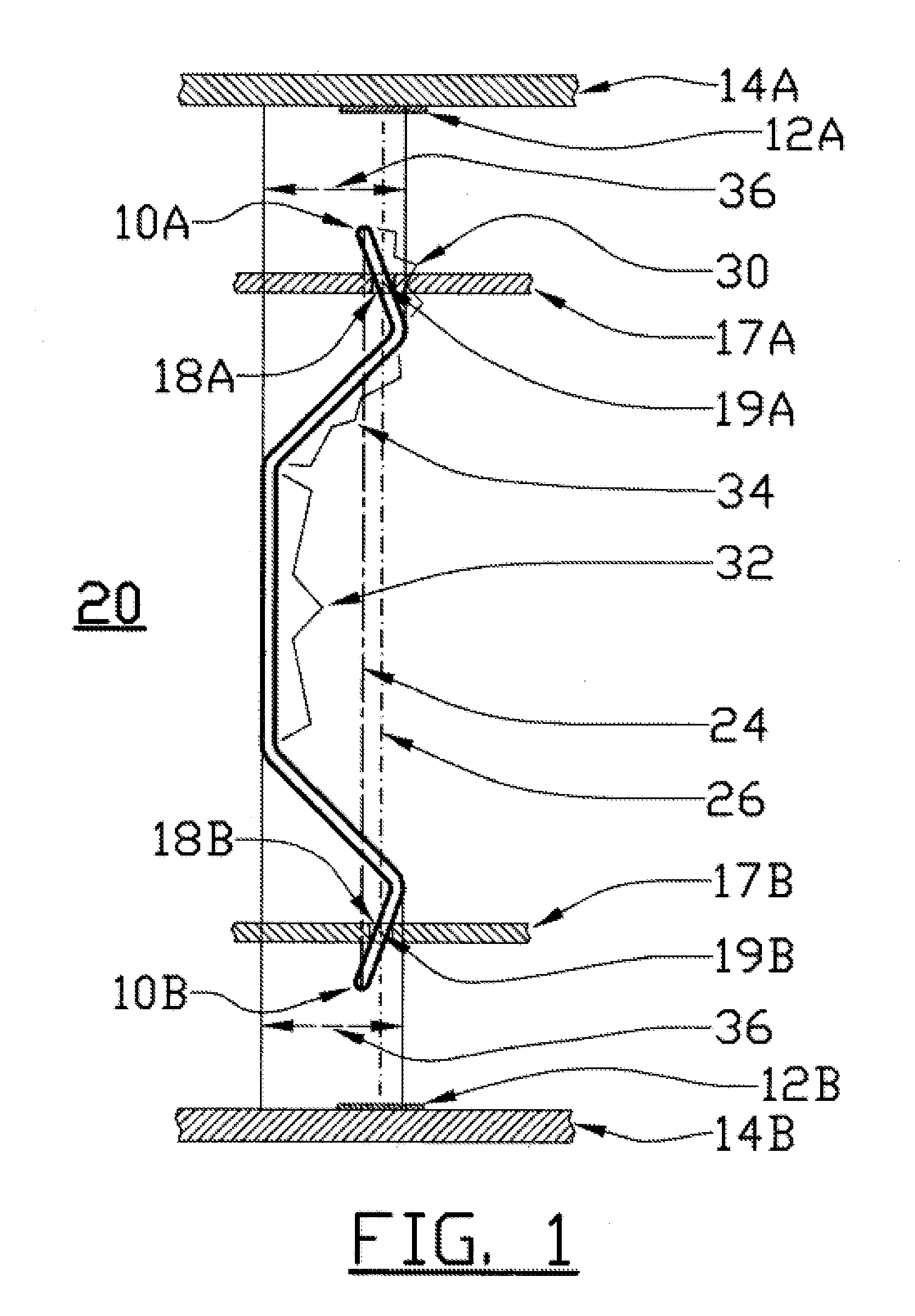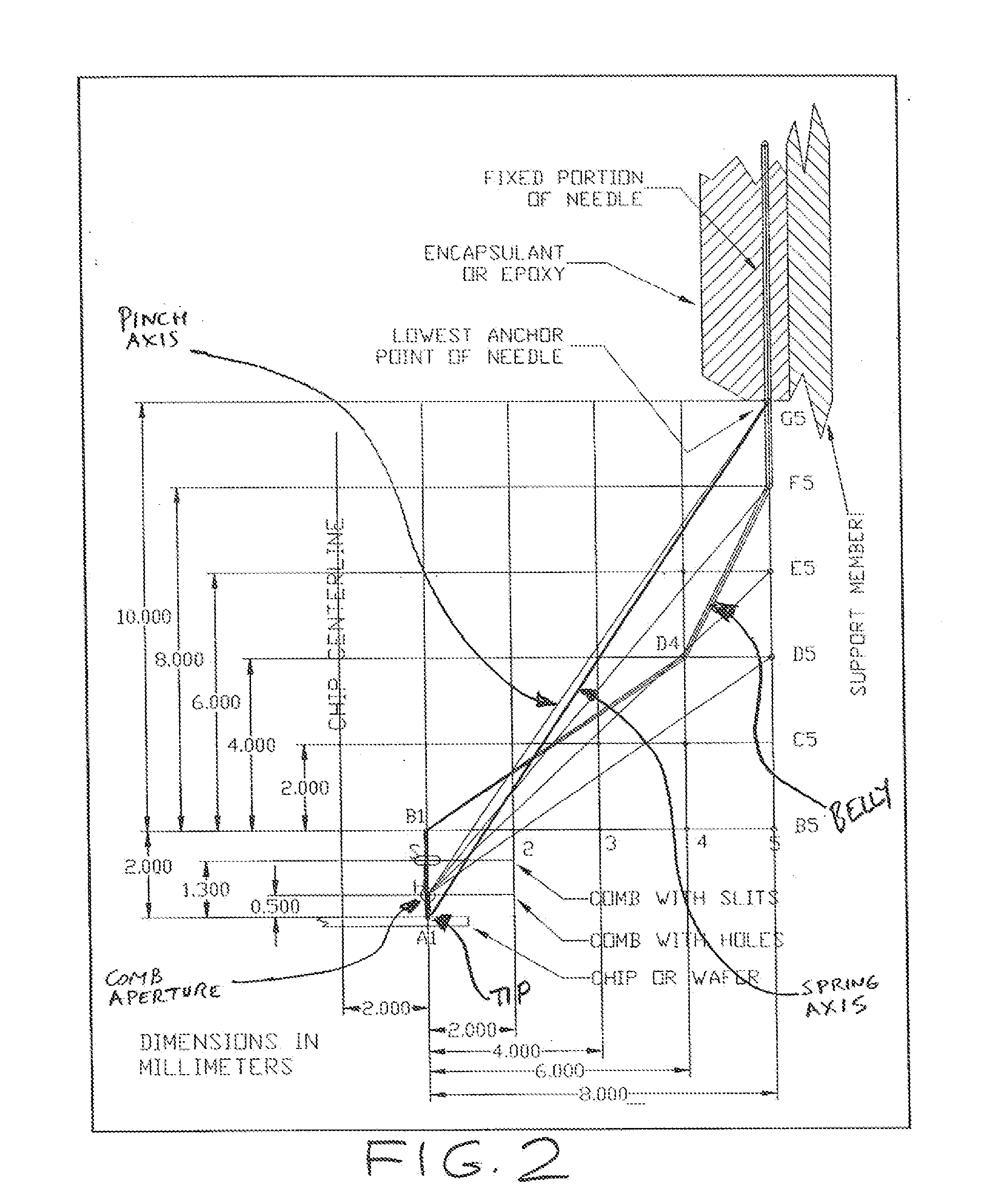S&P2 CWW1 connector with wipe
a technology of electrical connectors and wipes, applied in the direction of fixed connections, coupling device connections, instruments, etc., can solve the problems of increasing the cost of manufacturers, working with many products now available, and increasing the cost of testing devices through more expensive means, so as to reduce the drawbacks, reduce the ill effect of thermal cycling, and small area or footprint
- Summary
- Abstract
- Description
- Claims
- Application Information
AI Technical Summary
Benefits of technology
Problems solved by technology
Method used
Image
Examples
application example 1
[0092]FIG. 5 shows an example of a “socket” built according to the concepts covered here, specifically using the staggered spring arrangement.
[0093] The contact springs are located inside a housing. The housing includes the upper and lower “combs” and the housing body. Depending on the application, the socket may also have a lid to push down on the DUT, a latch to hold the lid down, and other peripheral components. An example of these components is shown in FIG. 32 and will be described later.
[0094]FIG. 7 shows an isometric view of the springs shown in FIG. 5, but without the housing, for clarity's purpose.
[0095] Let us also agree on the coordinate directions. If we look at the socket or the spring matrix from the top, then we will say that this is the x- and y-directions. If we look at the side view, as in FIG. 5, then the horizontal direction is the x-direction, while the vertical direction is the z-direction.
[0096] The 3-Dimensional view in FIG. 7 shows all three directions. ...
illustration example
[0121]FIG. 9 is an illustration of parallel nested springs. In this case, the springs are “C”-shaped. They are shown under No-Load, i.e. with no deflection.
[0122]FIG. 10 shows the same springs, but under some load. The natural tendency of such springs, when compressed by an axial load, is to deform as shown. Their bellies have bulged, but because they are all parallel and nested in the same direction, they still do not touch. The tails of the springs tilt when compressed, as shown. Please notice the somewhat slanted hourglass shape of the holes in the top and bottom combs. This shape does not “fight” the natural tendency of the springs tails to rotate or tilt.
[0123] Wipe or Scrub
[0124] Assuming that the device under test (DUT) to be contacted by these springs is “fixed” horizontally or “guided” with respect to the combs, then the compression of the springs creates a horizontal relative motion between the spring tips and the contact pads of the DUT. This relative motion creates a ...
application example 2
[0127]FIGS. 11 and 12 show a socket implementation containing a matrix of 20 by 20 “C” springs. We are looking at a side view in the x-z directions. This shows only one row of 20 springs. The other rows are behind and are hidden.
[0128]FIGS. 21 through 24 and 30 and 31 show the top view of similar sockets, showing the full matrix.
[0129]FIG. 21 and 31 shows the top view of the socket, with the 20 rows, each having 20 springs.
[0130] The springs are shown in a “parallel nesting” arrangement, held in place with two combs. We also see a middle member.
[0131] The middle member in FIGS. 11 and 12, called a “slider”, moves back and forth with the movement of the bellies of the springs. The springs can slide and move freely through the holes of the slider, as well as through the holes of the top and bottom combs.
[0132] The slider has a number of functions. First, it keeps the springs “organized”. Second, it helps to prevent the springs from touching each other and “shorting. Third, it has...
PUM
| Property | Measurement | Unit |
|---|---|---|
| angle | aaaaa | aaaaa |
| nesting angle | aaaaa | aaaaa |
| center distance | aaaaa | aaaaa |
Abstract
Description
Claims
Application Information
 Login to View More
Login to View More - R&D
- Intellectual Property
- Life Sciences
- Materials
- Tech Scout
- Unparalleled Data Quality
- Higher Quality Content
- 60% Fewer Hallucinations
Browse by: Latest US Patents, China's latest patents, Technical Efficacy Thesaurus, Application Domain, Technology Topic, Popular Technical Reports.
© 2025 PatSnap. All rights reserved.Legal|Privacy policy|Modern Slavery Act Transparency Statement|Sitemap|About US| Contact US: help@patsnap.com



